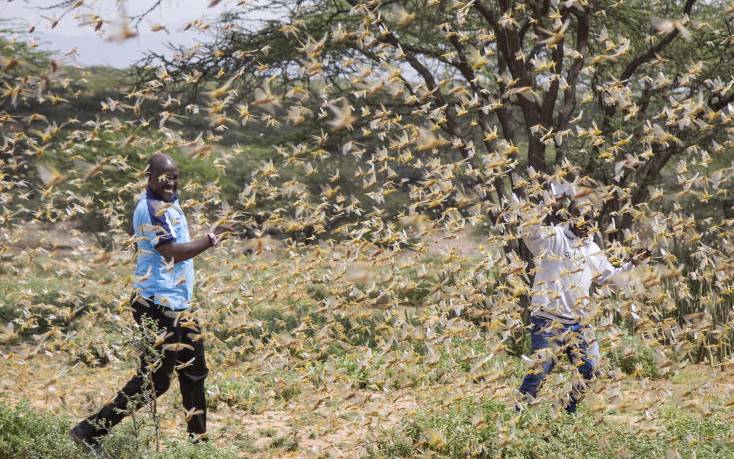The Federal Republic of Somalia has declared the Desert Locust invasion a matter of national emergency.
In a Press release seen by Standard Digital, Somalia’s government has termed the locust invasion a severe threat to national food security. It has anticipated that the upsurge of the pest invasion could affect the new planting season in the country.It states partly: “The Federal Government of Somalia is concerned about the risks desert locusts pose to the ’cropping season which starts in April.”
“It is vital to contain the pests with a rapid scale-up in control operations while protecting and supporting the livelihoods of farmers and pastoralists.”Somali Minister for Agriculture Said Hussein revealed that the State was committed to protecting the Somali people through all the necessary means.“Given the severity of the locust outbreak, we must commit our best efforts to protect the food security and livelihoods of Somali people. If we don’t act now, we risk severe food crisis that we cannot afford by any means,” he said.
According to Hussein, Mogadishu has put in place measures to curb the menace such as surveillance, data collection, and timely reporting and control activities.As of December 18, 2019, Reuters reported that the locusts had wreaked havoc in the horn of Africa sweeping vegetation in about 70,000 hectares of land.
The invasion transcended borders as it spilled from Somalia into Ethiopia. Food Agriculture Organisation estimated that food destroyed in the event could feed up to around 2,500 people.Yesterday, the Pakistani government also declared a national emergency over locust invasion.
German-based media DW reported that Pakistani Prime Minister Imran Khan settled on the move to protect farmers and their crops after the pests invaded the eastern part of the country.The pests are reported to have invaded 121, 400 hectares of land, while the authorities have only managed to spray a portion of 20,000 hectares.

The problem is yet to be handled in Kenya, as the pests continue spreading.Agriculture Cabinet Secretary Peter Munya said on January 23, 2020, that the pests had invaded 10 counties as of that day.
Counties affected included Mandera, Wajir, Marsabit, Garissa, Isiolo, Samburu, Baringo, Meru, Laikipia and Kitui.He said that the ministry was relying on aerial control and using tested and registered chemicals that are harmless to animals and humans.However, his statement on Monday, January 28 may have even dampened the hope of farmers more.
The CS said that more locusts were arriving from Yemen and Somalia and containing them would take time.“It will not be easy to fight these locusts and we anticipate the earliest that we can bring them under control is in the next six months,” he said.The government is yet to declare locust invasion an issue of national emergency.






